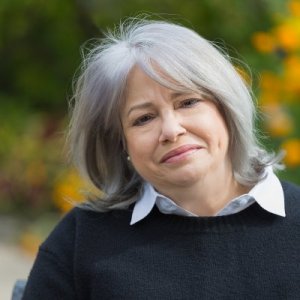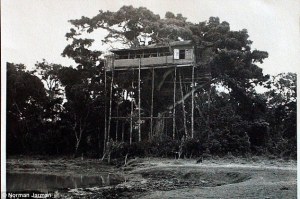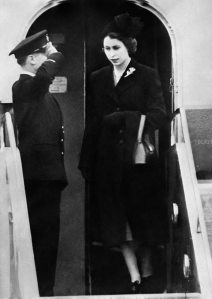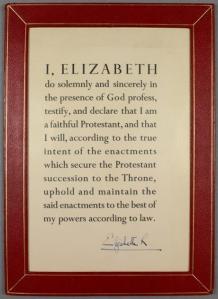Kay Redfield Jamison is the Dalio Family Professor in Mood Disorders and a professor of psychiatry at The Johns Hopkins Hospital at The Johns Hopkins University School of Medicine in Baltimore, who catapulted to fame 25 years ago with a bestseller she wrote about her manic depression, titled “An Unquiet Mind.” Jamison “changed the way we think about moods and madness,” says her publisher, Penguin Random House Books.
 Jamison is one of the foremost authorities on manic-depressive (bipolar) illness; she has also experienced it firsthand. For even while she was pursuing her career in academic medicine, In the prologue to “An Unquiet Mind,” Jamison was in a manic grip that sent her running around a parking lot at two in the morning. Later in the book, she described the world going dark when she was unable to get out of bed or make sense of the words she tried to read.
Jamison is one of the foremost authorities on manic-depressive (bipolar) illness; she has also experienced it firsthand. For even while she was pursuing her career in academic medicine, In the prologue to “An Unquiet Mind,” Jamison was in a manic grip that sent her running around a parking lot at two in the morning. Later in the book, she described the world going dark when she was unable to get out of bed or make sense of the words she tried to read.
She found herself succumbing to the same exhilarating highs and catastrophic depressions that afflicted many of her patients, as her disorder launched her into ruinous spending sprees, episodes of violence, and an attempted suicide. Jamison explored bipolar illness from the dual perspectives of the healer and the healed, revealing both its terrors and the cruel allure that at times prompted her to resist taking medication.
 I was working as a part-time reporter at the Kingston Whig-Standard, finishing writing my master’s thesis (“America’s symbolic ‘Cordon sanitaire?’ Ideas, aliens and the McCarran-Walter Act of 1952 in the age of Reagan” ISBN: 0612046591) at Queen’s University when Jamison’s book was first published. I was able to read an advance book review copy of “An Unquiet Mind” at the Whig back in the Summer of 1995.
I was working as a part-time reporter at the Kingston Whig-Standard, finishing writing my master’s thesis (“America’s symbolic ‘Cordon sanitaire?’ Ideas, aliens and the McCarran-Walter Act of 1952 in the age of Reagan” ISBN: 0612046591) at Queen’s University when Jamison’s book was first published. I was able to read an advance book review copy of “An Unquiet Mind” at the Whig back in the Summer of 1995.
Aside from being attracted to her elegant and compelling writing, I wanted to read Jamison’s book for a much more personal reason; my grad school thesis supervisor had told us about his struggles with manic-depressive (bipolar) illness in the autumn of 1993 during a first semester afternoon seminar. I remember the day vividly. While it was a fairly typical overcast and dreary day for that time of year in the Limestone City on Lake Ontario’s north shore, my supervisor was over-dressed in what appeared to be the warmest cardigan in the world, as if he just couldn’t stay warm no matter what he wore or did. At -30°C (-41°C with the wind chill) as it is here in Thompson, Manitoba, as I write these words some 27 years later on Dec. 23, 2020, the cardigan would have been perfect: that day in Kingston so long ago it somehow looked overdone, out of place.
And it would have been just around then, as he was slowly walking around the classroom, that he told his students about how he suffered from manic-depressive (bipolar) illness. In trying to explain it, he put it this way: “I wake up every day and it’s like I’m waking up at 4 a.m. in the morning. That’s how the world looks.” You don’t have to suffer from a mental illness to immediately understand something of how the world appeared to him. Most of us, I think, have a sense of vulnerability, if we’re not blessedly asleep at that hour. Not a lot of good things are known to happen at 4 a.m. in my experience; sort or reminiscent of the dread middle of the night phone ringing with an unwelcome call jarring you out of a deep sleep for what is seldom, or ever, good news. God, grant us sunrise.
I spent the next two years trying to time my meetings and assignment schedule with my supervisor by trying to guess where he’d be in his mood cycle: despondent and depressed, more-or-less “normal,” not overly up or down (a phase that often ran for months, much longer than either his low lows or high highs lasted usually.)
In the Summer of 1995, I was writing my thesis in the always-chilly-even-in-summer math computer lab in the basement of Jeffery Hall, which has three floors underground, and opened at Queen’s in 1969, housing the Department of Mathematics and Statistics. The hall is named after Ralph L. Jeffery, who was head of mathematics and chair of graduate studies from 1943 to 1960. That’s also when I read Jamison’s just-published memoir, “An Unquiet Mind.” I hoped reading one professor would give me some insights into another professor, my professor. And it did.
As I read the book, I remember handing in the first draft of my thesis on a Friday afternoon. More than 100 pages. I had it back Monday morning from my supervisor with detailed handwritten notations and insightful, penetrating comments and questions. I was speechless that he found time even to read it over the weekend, much less comment with laser-like brilliant questions that clearly hadn’t occurred to me in the writing.
 Flash-forward a quarter of a century. Judy Bolton-Fasman, Jamison’s granddaughter, is the arts and culture writer for JewishBoston.com. Her essays and articles have appeared in The New York Times, The Boston Globe, The Forward, Tablet Magazine, Cognoscenti and other venues. And her memoir, “Asylum: A Memoir of Family Secrets,” is forthcoming in fall 2021 from Mandel Vilar Press.
Flash-forward a quarter of a century. Judy Bolton-Fasman, Jamison’s granddaughter, is the arts and culture writer for JewishBoston.com. Her essays and articles have appeared in The New York Times, The Boston Globe, The Forward, Tablet Magazine, Cognoscenti and other venues. And her memoir, “Asylum: A Memoir of Family Secrets,” is forthcoming in fall 2021 from Mandel Vilar Press.
“Almost a century ago, my grandmother was forced into a frigid shower, ostensibly to calm her down during a devastating panic attack,” Bolton-Fasman wrote Nov. 30 at JewishBoston.com (https://www.jewishboston.com/and-then-unquiet-minds-in-a-quiet-time/).. She was told in no uncertain terms to ‘get a hold of herself.’ At one point, Grandma’s physician brother thought she belonged in an asylum. I picture Grandma in that shower rocking back and forth, shivering more from terror than cold.”
“My grandmother’s story came rushing back,” wrote Bolton-Fasman, as I went over my reporting for an event Dec. 7, aptly called “Unquiet Minds in a Quiet Time: Insights on Mental Health, Resilience and Community,” sponsored by the Ruderman Synagogue Inclusion Project (RSIP), a partnership between Combined Jewish Philanthropies (CJP) and the Ruderman Family Foundation, a private philanthropic foundation established and managed by the Ruderman family, both of which are based in Boston and support synagogues “in creating communities where people of all abilities are valued equally and participate fully.”
Kay Redfield Jamison turned 74 last June. Her latest book, “Robert Lowell: Setting the River on Fire” was a Pulitzer Prize Finalist for Biography in 2018.
You can also follow me on Twitter at: https://twitter.com/jwbarker22




